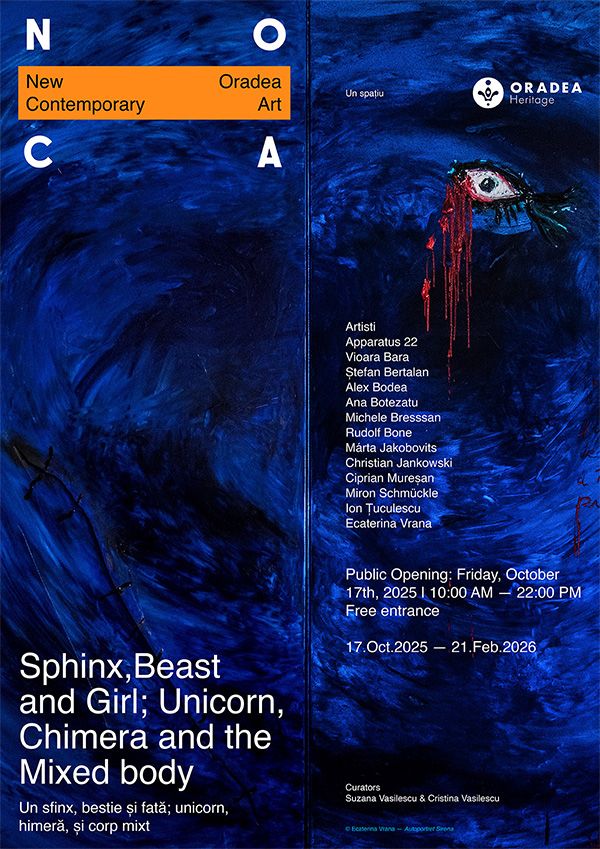Monster? A sphinx, beast and girl; centaur, man and horse; unicorn, chimera, composite and mixed body; where and how to locate the place of suture or mixture, the crack where the bond is knotted and tightened, the scars where the lips, right and left, up and down, but also the angel and the beast, the vain, modest or vengeful victor and the humble or repulsive victim, the inert and the living, the miserable and the very rich, the complete idiot and the lively madman, the genius and the imbecile, the master and the slave, the emperor and the clown are united? A monster, certainly, but normal. What shadow must be removed now to reveal the meeting point?
Excerpt from The Troubadour of Knowledge of Michel Serres
The inaugural exhibition of NOCA Space (New Oradea Contemporary Art) brings together a constellation of artistic voices that explore themes of the playful and the monstrous, the surreal and the irrational, inviting viewers into a space of playful and sometimes disturbing dialogue. It comes at a time when we have become accustomed to living in fragmented and tangled realities, like worlds that simultaneously connect and separate, soothe and destabilize. As our inner and outer lives become increasingly disjointed, the exhibition turns to fantasy as a mode of resistance: a return to the aesthetics of fairy tales, to childlike wonder and to playful intervention. Rather than offering an escape, fantasy becomes a critical tool, a way to navigate ambiguity, negotiate tension and reimagine the coordinates of the real.
In this context, the monstrous is approached not as a source of fear, but as a figure of transformation, ambiguity, and potential. The traditional monster is redefined as a challenge to the narratives that made it threatening, becoming instead a channel of action for those against whom the monstrous was used. This redefinition resonates with Oradea’s history, marked by cycles of occupation, revolt, erasure, and reconstruction. As in other parts of the region, socio-political power has shifted repeatedly, leaving lasting traces. Seen through this lens, the monstrous aligns with Rosi Braidotti’s notion of radical difference and embodied resistance. The monstrous thus persists in local folklore and oral traditions as a figure of enduring refusal of domestication and control.
Each included artwork speaks from its own point of view, but remains connected to the others, opening up a shared space of creative tension and speculative dissent.
Artists
Apparatus 22
Vioara Bara
Ștefan Bertalan
Alex Bodea
Ana Botezatu
Michele Bressan
Rudolf Bone
Marta Jakobovits
Christian Jankowski
Ciprian Mureșan
Miron Schmückle
Ion Țuculescu
Ecaterina Vrana
